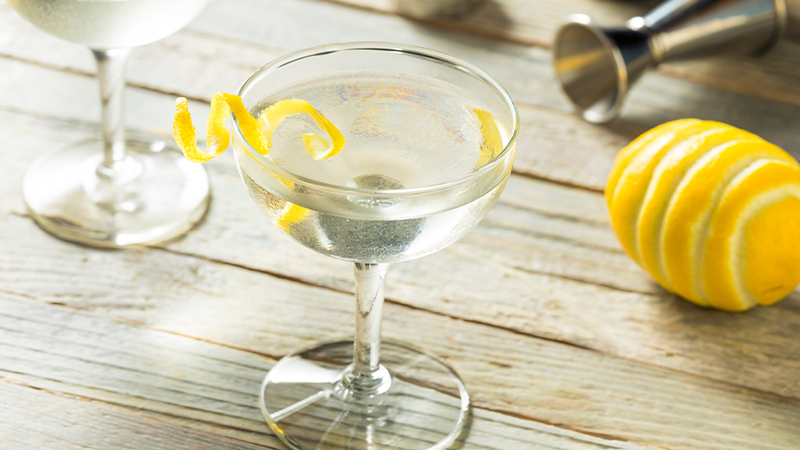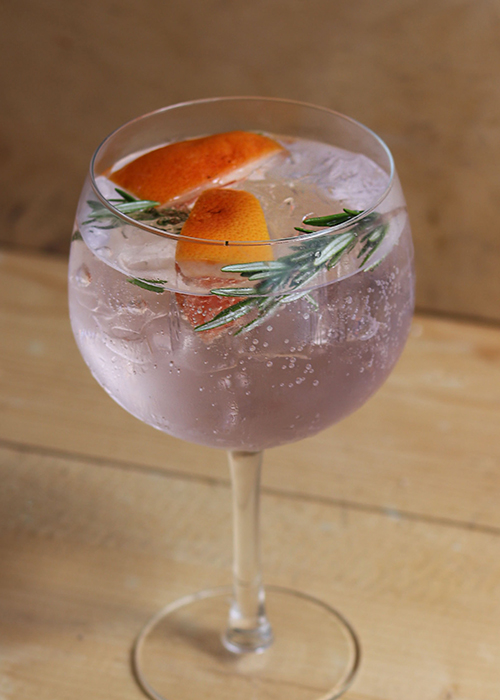Proclaim a disliking for gin and any bartender worth their bitters will likely respond with the following: “Is it gin that you don’t like or tonic?”
It’s a strange position that gin finds itself in. The G&T is easily the world’s most recognizable gin cocktail — helped by the spirit featuring in the name — yet the complex combo is perhaps not the best place to begin a gin exploration.
“A gin and tonic is not where I would [recommend] someone start because tonic is so challenging,” says Nate Brown. “We’re hardwired to dislike bitter flavors.”
Based in London, Brown has spent a decade running cocktail bars in the British capital, and consulting for brands and hospitality groups. An avid Martini drinker, Brown is passionate about gin and has extensive experience mixing the juniper-laced spirit in cocktails. In 2016, while under his co-ownership, London’s Merchant House bar took home the title of the U.K.’s “Best Gin Bar.”
To fall for gin is to embark upon a lengthy journey. Unlike, say, whiskey or even mezcal, it’s also a path that’s exclusively paved with cocktails, and the G&T will definitely appear along that way. But Brown points to another first port of call and views another classic gin drink as the ultimate destination in this pursuit.
With brief stops at “hero” botanicals and fruity, shaken concoctions, and a scenic detour into the land of vermouth, this is an expert’s guide to drinking gin.
Building on Botanicals
“The wonderful thing about the world of gin at the minute is the spectrum of flavor is so huge,” says Brown. “It’s much easier today to get into gin than it was a couple of years ago.”
By law, all gin must have a definitive juniper profile. Beyond that, it’s fair game. On the “spectrum” of flavor that Brown describes, he’s specifically referring to the supporting botanicals used to flavor gin and make each expression unique.
In recent years, scores of distillers have looked beyond the traditional cast of coriander seeds, angelica root, and licorice (to name a few), and instead brought ingredients like fresh berries, rose petals, and even cucumber to the forefront.
Often described as New Western gins, these expressions have a more approachable flavor profile than the London Dry style. And that makes them a perfect jumping off point for novices, Brown suggests.
Start with simple highballs, he says, using mixers that lean into and match with each brand’s unique flavor profile or “hero” botanical. (If not listed on a bottle label, the predominant botanical will certainly feature on a brand’s website.) This way, the palate will start to become accustomed to the tricky nuances of juniper while also enjoying the distraction of something more familiar.
“Play on the gin’s strengths,” Brown says. “Find what it’s born to do.”
Fruit-Forward, Shaken Gin Cocktails
Though unquestionably refreshing, these highballs might not seem like “bonafide” cocktails, and they certainly don’t offer an excuse to pull out a coupe or Martini glass. So to graduate from this gentle introduction, Brown recommends moving onto drinks that are shaken, fruit-forward, and have a perception of sweetness.
Start with the Clover Club, a vibrant blend of gin, raspberry syrup, lemon juice, and egg white that tastes every bit as good as it looks. “It’s historically important, but it’s also easy-drinking, beautifully colored, fruity, and sweet,” Brown says.
Similar opportunities include creations such as the White Lady, a riff on the classic Sidecar cocktail that sees gin shaken with orange liqueur and lemon juice. There’s also the Gimlet, a historic British Royal Navy cocktail originally devised to fight scurvy via the inclusion of lime cordial. (Homemade cordial is always better than store bought on this front.)
“When you get into the Gimlet, then you can start to bring down the level of lime cordial and increase the level of gin,” Brown says. “Now you’re really starting to let gin shine.”

Gin and Vermouth: A Match Made in Heaven
All gin aficionados will agree that this ongoing exploration ultimately leads to the Martini. Cut with a pour of vermouth — itself the wine equivalent of gin — the Martini offers the purest expression of the spirit in cocktails and can be thought of not as one drink but a category (if not world) of cocktails to explore.
Brown recommends starting out on the “wetter” end of the Martini spectrum, using a hearty glug of vermouth (at least one part for every two parts gin) and also including a seasoning of orange bitters for a subtle fruity pop.
If vermouth proves to be challenging at first, Brown suggests turning to aromatized wines that also contain a hint of sweetness, such as Lillet Blanc or Cocchi Americano. Or, for a drier experience without the botanicals, reach instead for a fino or manzanilla sherry.
With more experience gained sipping Martinis, some drinker’s palates may gravitate toward lower proportions of vermouth while others feel just fine with a 2-to-1 or even 50-50 Martini. Regardless, Brown says it’s important to always keep in mind that because every gin is unique, a preferred ratio for one gin brand might not necessarily work for another.
“You can have exactly the same methodology and ratios, but if you substitute one gin for another, one Martini could be beautiful and the other could taste ridiculous,” he says.”It’s so finely balanced that sticking to a recipe is nonsense.”

Don’t Discount the G&T
The careful consideration of ingredients employed when mixing Martinis extends to fixing a G&T. In this case, the tonic is every bit as important as the gin, and preparing the drink also ties in many of Brown’s other lessons.
“Find a tonic that matches your gin,” he says. “But also don’t overlook the garnish.”
If the gin at hand showcases grapefruit peel, for example, reach for a neutral or slightly citrus-forward tonic to amplify that character. And turn to the fresh version of that very same fruit for the garnish. “If you see grapefruit, you’re expecting grapefruit [in the drink],” Brown says. “When you then taste grapefruit, that confirmation bias is like fireworks in your brain.”
